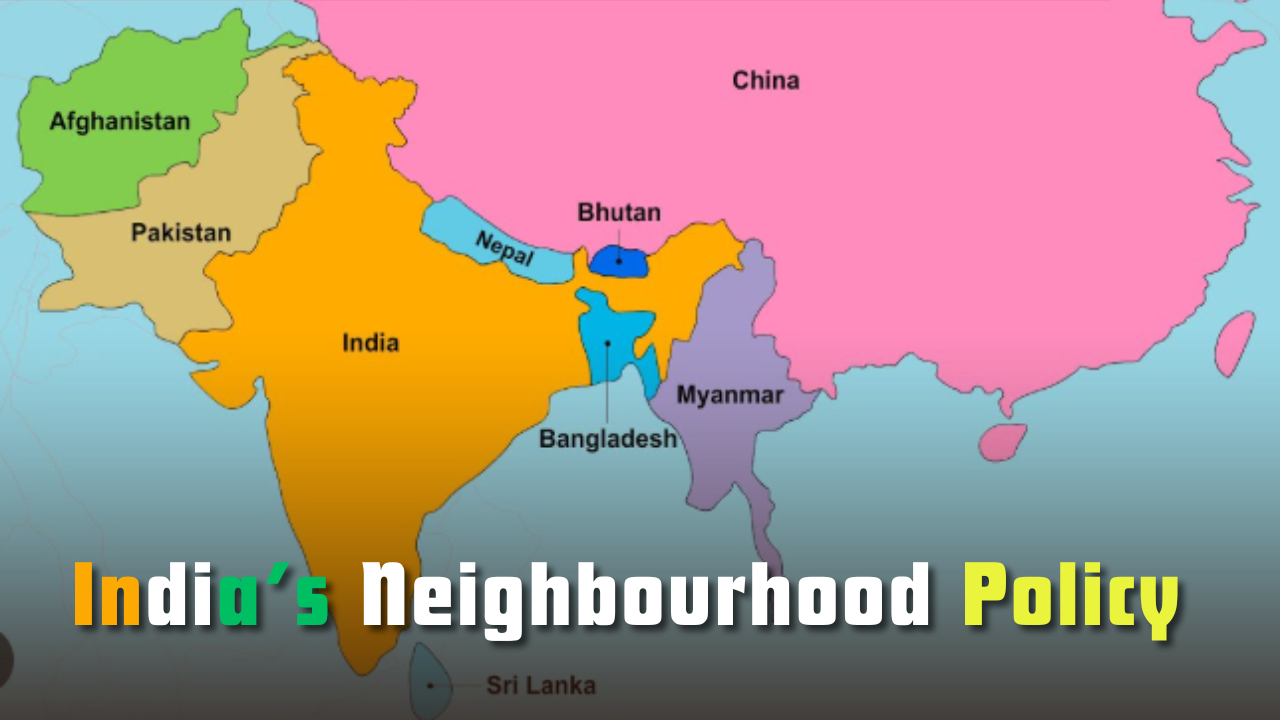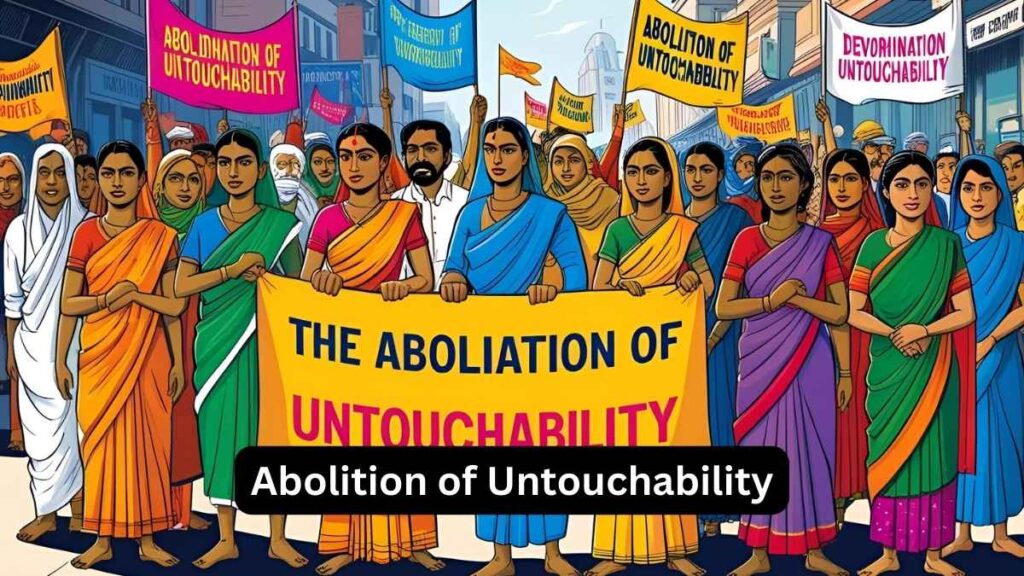India’s Neighbourhood Policy – Affective Diplomacy
Hearts Across Borders: Reimagining India’s Neighbourhood Policy through Affective Diplomacy
Context : This essay explores how India is increasingly using emotion, memory, and shared culture to reframe its neighbourhood diplomacy. It argues that affective diplomacy—through fellowships, cultural ties, and grassroots trust-building—offers a powerful complement to traditional statecraft. Yet, without structural backing and inclusive narratives, its promise risks dilution. Emotion may soften boundaries, but only strategic empathy can redraw them.
In recent years, India’s neighbourhood diplomacy has begun to reflect a quiet but significant shift. Beyond high-level summits and trade negotiations, there is growing emphasis on fostering emotional connection, shared memory, and cultural resonance across borders. This evolving strategy—centred around people-to-people ties, symbolic gestures, and grassroots initiatives—has come to be described as affective diplomacy.
In their article “Weaving Trust: Affective Diplomacy in India’s Neighbourhood” (ORF, July 04, 2025) Sreeparna Banerjee and Rajeshwari Dasgupta illuminate this shift, arguing that emotional registers such as empathy, shared memory, and cultural affinity can serve as durable foundations for regional trust. As Banerjee and Dasgupta (2025) write, “In these attempts to cultivate affective ties, it is often the sentiments of familiarity, proximity and memory that are invoked as a way to overcome the alienation caused by the distance of state-to-state diplomacy. Drawing from India’s engagement with ASEAN, BIMSTEC, and MGC (Mekong–Ganga Cooperation) frameworks, the authors show how affective diplomacy is being operationalised through fellowships, cultural exchanges, and Quick Impact Projects that bridge citizens rather than merely governments.
While traditional diplomacy is anchored in interests, alliances, and strategic calculus, affective diplomacy taps into the emotional registers that shape public perception and legitimacy. In the context of South and Southeast Asia, where colonial trauma, cultural overlap, and historical mistrust still inform regional relations, such an approach may be uniquely positioned to rebuild trust and cooperation.
This essay argues that affective diplomacy, when institutionalised and integrated with strategic policymaking, offers India a transformative tool for reimagining its regional relationships. Drawing on cultural memory, empathy, and shared development, this approach provides a pathway to rebuilding regional trust. Yet, its effectiveness depends on structural support, inclusive narratives, and credible policy execution.
To understand the deeper roots of this approach, we must look beyond recent developments and examine how India’s external engagement has historically relied on emotionally resonant, culturally grounded forms of influence.
Civilisational Continuities and Emotional Statecraft
India’s pursuit of affective diplomacy is deeply rooted in its historical approach to foreign engagement. Rather than relying on force or coercion, India has long projected influence through cultural exchange, shared traditions, and civilisational ties. This form of diplomacy is grounded in values like pluralism, mutual respect, and dialogue—positioning India as a cooperative regional partner rather than a dominant power. Its emphasis lies in forging emotional and cultural bonds that resonate across borders. Banerjee and Dasgupta (2025) build on this orientation, showing how India’s current efforts—such as Quick Impact Projects (QIPs) in CLMV countries, Buddhist circuits, diaspora outreach, and youth fellowships—extend this tradition into the twenty-first century.
What distinguishes this approach is its emphasis on emotional registers: grief over shared colonial trauma, joy in cultural festivals, pride in mutual heritage, and trust in localised development. Such registers are not just symbolic; they are affectively potent instruments of legitimacy.
The Emotional Turn in International Relations
To grasp the theoretical depth of Banerjee and Dasgupta’s claims, it is vital to consider the “emotional turn” in international relations. Neta C. Crawford argues, in “The Passion of World Politics: Propositions on Emotion and Emotional Relationships” (International Security, 24.4, 2000, pp. 116-1560), that emotions such as fear, honour, and empathy are not irrational residues but central forces in shaping foreign policy. As Crawford observes, “The rational–irrational dichotomy in international relations theory may be undermined and potentially overturned as scholars take advantage of an ‘emotional revolution’ in psychology.” (p. 119). This insight highlights her broader claim that emotions like empathy and fear are not peripheral but central to how world politics unfolds. She calls for international relations to move beyond reason alone and recognise emotions as key forces. This helps us understand diplomacy through shared memories and trust—not just interests—making her work vital for peacebuilding and emotional global engagement.
This theoretical insight has practical resonance in India’s regional diplomacy. The shift from interest-driven engagement to emotionally anchored outreach is clearly reflected in Banerjee and Dasgupta’s analysis (2025), which illustrates how India’s mechanisms—from ICCR scholarships to cultural diplomacy—engage the region through sentiment as much as strategy. Emotions, when made political, offer not only new ways to frame policy but also new channels to mend historical mistrust.
From Symbol to Institution: How Affective Diplomacy Functions
The real merit of affective diplomacy lies in its institutionalisation. India has not merely relied on symbolic gestures; it has developed repeatable platforms for emotional engagement. Banerjee and Dasgupta (2025) highlight initiatives like the Ayush Fellowship, annual youth summits, and state-sponsored Buddhist festivals as means of engaging civil society beyond elite diplomats. These efforts, when integrated into regional cooperation frameworks like BIMSTEC and MGC, serve as infrastructures of feeling—a network of shared emotional experiences institutionalised across time.
This approach aligns with Roland Bleiker and Emma Hutchison’s assertion in “Theorizing Emotions in World Politics” (International Theory, 6. 3, Nov. 2014, pp. 491–514) that “The key challenge consists of theorizing the processes through which individual emotions become collective and political.” (p. 492). This quote shows the article’s main idea: emotions are not just private feelings but become political when shared and acted on. This shift helps explain how emotions like grief, fear, or empathy can shape how countries behave, make policies, and build international rules.
India’s grassroots projects offer practical examples of this emotional shift. They take personal feelings and shared histories and transform them into public trust—turning memory and sentiment into meaningful cross-border relationships.
The Smart Power Synthesis: Emotional Diplomacy with Strategic Spine
Despite its promise, affective diplomacy is not a substitute for material strength. As Patryk Kugiel cautions in India’s Soft Power: A New Foreign Policy Strategy (Routledge, 2017), “Soft power becomes credible when there is hard power behind it” (p. 9). Kugiel critiques India’s sporadic efforts to convert soft power potential into actionable outcomes, warning against overreliance on symbolism without structural backup.
Banerjee and Dasgupta (2025) acknowledge these limits. Visa bottlenecks, poor branding, and lack of regional media penetration restrict the reach of affective programmes. Moreover, elite capture often ensures that fellowships and summits benefit urban, English-speaking circles more than the rural populations they aim to represent. Without a clear “smart power” strategy—where emotion complements economic and strategic policies—the promise of affective diplomacy remains aspirational.
Tensions Within: Regionalism, Pragmatism, and the Indo-Pacific Dilemma
While affective diplomacy claims to foster inclusivity, there is tension between its civilisational narrative and the geopolitical reality of regional forums. Priya Chacko notes this in “The Rise of the Indo-Pacific: Understanding Ideational Change and Continuity in India’s Foreign Policy” (Australian Journal of International Affairs, 68.4, 2014, pp. 432-452). She critiques: “This conception of the Indo-Pacific… challenges two dominant ideas in India’s foreign policy: non-alignment and the extended neighbourhood.” (p. 445). She argues that framing India’s regional role through civilisational or values-based alliances often reflects external expectations, particularly from Western democracies. These framings risk drawing India into strategic alignments that may undermine its autonomy and provoke tension with China. As a result, India has adopted a hybrid approach—engaging selectively in regional initiatives while preserving its independent stance. Chacko thus questions whether soft power genuinely shapes India’s regional vision or merely serves as a rhetorical layer over more interest-driven diplomacy.
Banerjee and Dasgupta do not fully resolve this tension. While they celebrate India’s cultural appeal in CLMV and ASEAN countries, they sidestep the geopolitical frictions—particularly India-China rivalry—that challenge the universality of emotional appeal. The MGC may speak of shared heritage, but realpolitik often shapes state behaviour more than soft gestures. Affective diplomacy, if overplayed, risks being seen as a veneer masking strategic anxieties.
Counterview: Can Emotion Truly Shape Policy in a Conflictual Region?
This raises a deeper question: Can emotion truly shape policy in a conflictual region? Sceptics argue that affective diplomacy is emotionally appealing but strategically shallow. In a region marked by insurgency, border disputes, and competitive infrastructure diplomacy (notably China’s Belt and Road Initiative), emotions may soothe but rarely secure. Critics contend that state behaviour, particularly in South Asia, is ultimately shaped by interest over intimacy.
Moreover, cultural diplomacy has its own blind spots. It often relies on dominant narratives—Hindu-Buddhist civilisational unity or elite Sanskritic values—that exclude minorities or alternate histories. What is “shared” may not be felt equally by all stakeholders. Affective diplomacy, if not plural and bottom-up, may reproduce the very mistrust it seeks to heal.
Conclusion: From Potential to Policy—Charting a Credible Emotional Arc
Banerjee and Dasgupta’s article (2025) offers a compelling vision of how emotion, when strategically harnessed, can elevate India’s regional engagement from transactional to transformational. Affective diplomacy, used judiciously, is not about sentimentality but about legitimacy, memory, and shared futures. It adds a cultural and human layer to India’s foreign policy, reinforcing its image as a civilisational actor rather than merely a strategic balancer.
Yet, for this promise to materialise, India must bridge the gap between intent and infrastructure, ensure that emotional registers are inclusive, and back symbolic initiatives with hard institutional support. A genuine Pax Indica must not only speak from the past but also invest in the emotional architectures of the present.
India’s neighbours will not be won over by rhetoric alone, but by trust woven patiently—thread by thread—through memory, emotion, and cooperation. That is the slow, silent labour of affective diplomacy.
Subscribe to our Youtube Channel for more Valuable Content – TheStudyias
Download the App to Subscribe to our Courses – Thestudyias
The Source’s Authority and Ownership of the Article is Claimed By THE STUDY IAS BY MANIKANT SINGH





